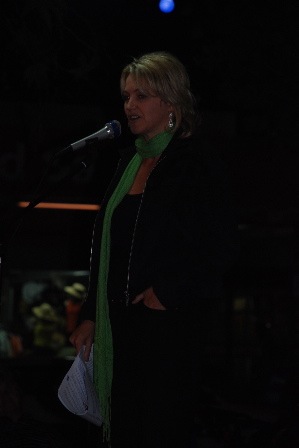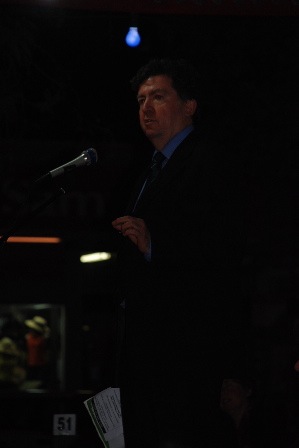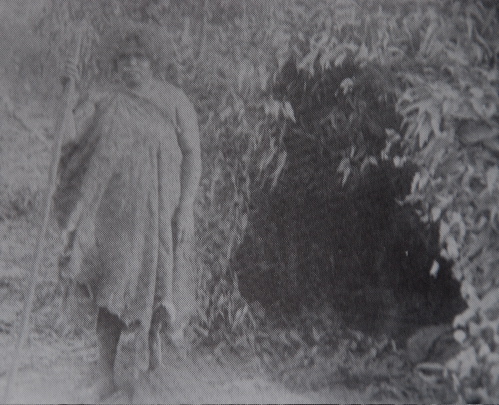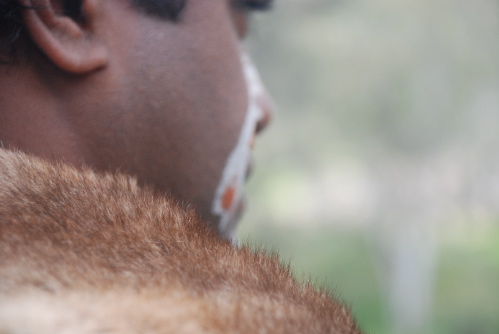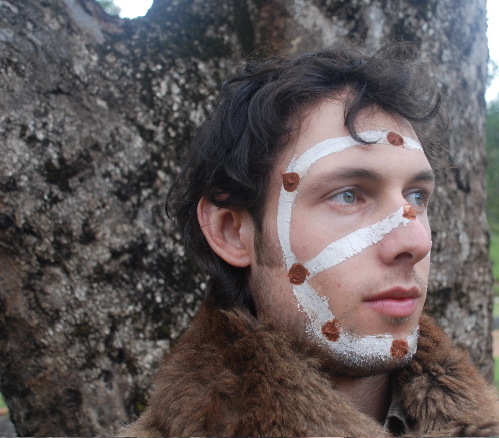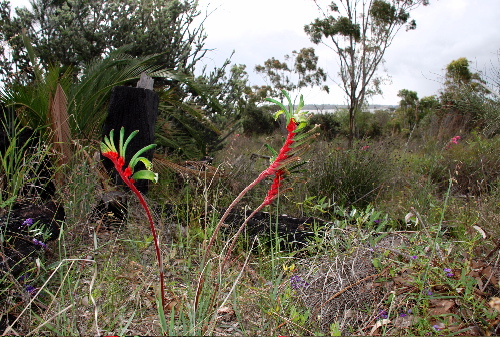This evening I was at the Tropicana Cafe in Fremantle for a session introducing the candidates for the 2007 federal election for this area. During the question time a friend of mine asked Melissa Park, the Labour candidate, if her party was committed to cutting total greenhouse gas emissions in line with the aim of avoiding a two degree rise in global temperature (which amounts to 80% to 90% reductions compared to 1990 levels by 2050). Melissa throughout the evening had presented herself as an amiable, well intentioned, and highly intelligent individual. As she stepped to the microphone a shadow of awkwardness crossed her face for a moment. She obviously felt uncomfortable at having to say that no, her party’s target was 60% reductions by 2050. But, she said, it might look at changing this target later on. Here is her moment of weakness:
Steve Walker, the Greens candidate then took the microphone. He said that no matter how nice and well intentioned a Labour candidate such as Melissa Park was, when it came to the hard and fast game of politics, she would be voted out by other less progressive elements in the Australian Labour Party.
He had a point, and he did not feel awkward when he said that the Greens had a set of climate change policies that were designed to help us stay below two degrees in rising temperature, and thus avoid run-away climate chaos.
